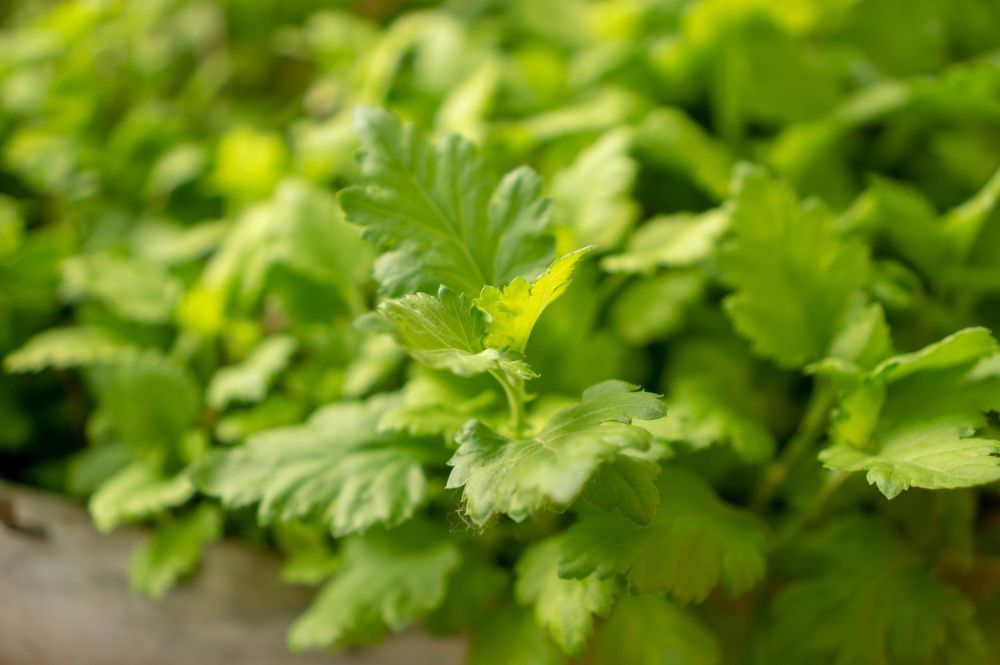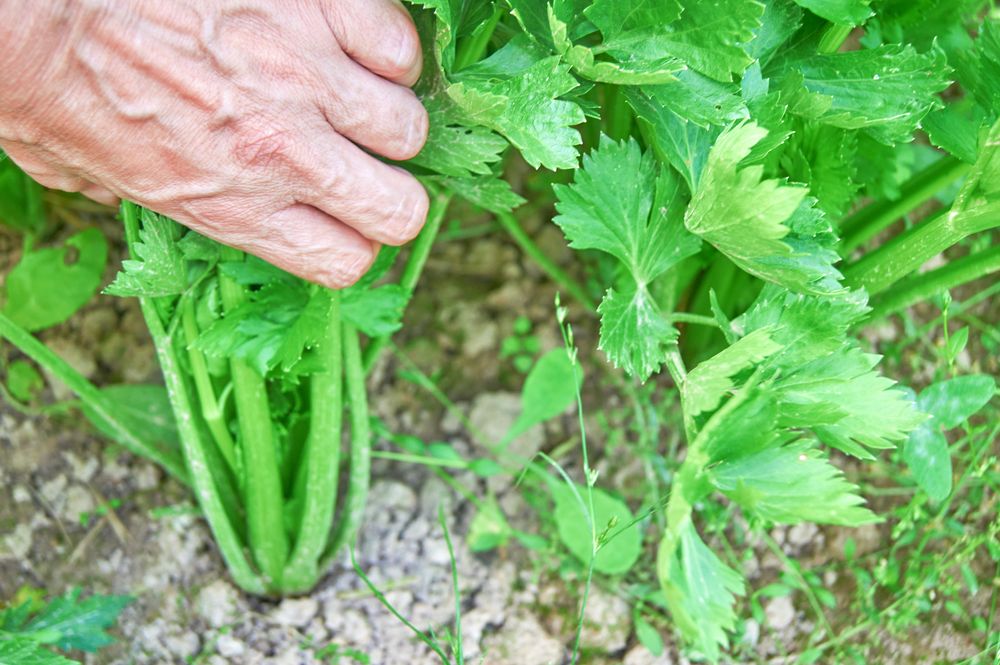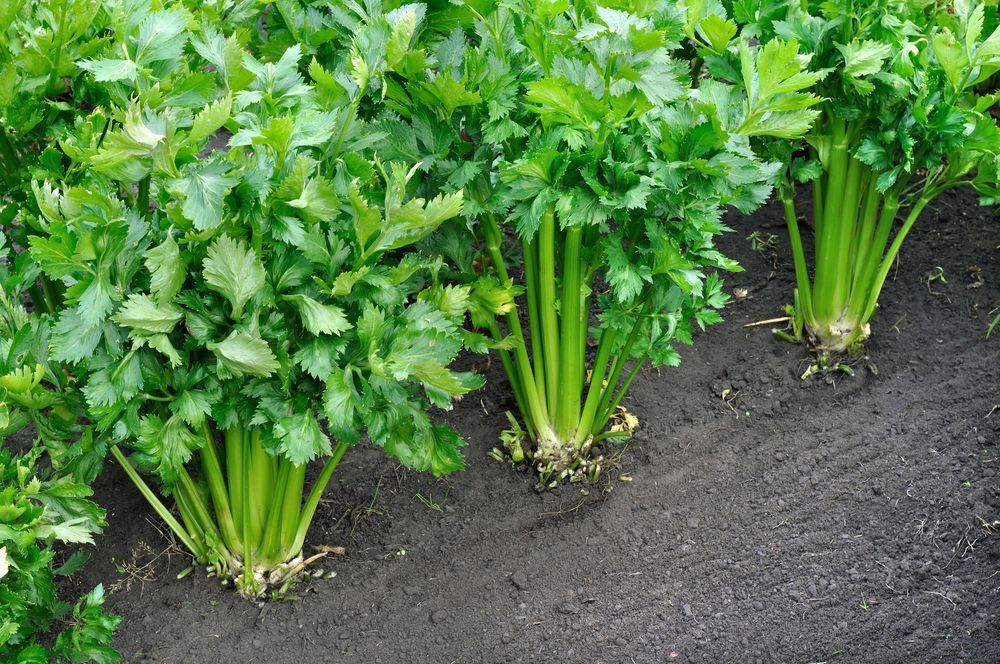How to Grow Celery to Enjoy Your Own Crop (Types, Uses, Harvest, and Care Tips)
If your experience with celery is limited to the stalks you take out of an alcoholic beverage and throw aside, you’re missing out since it has many uses and benefits. Keep reading to learn how to grow celery.
Long before it was relegated to a decorative role, celery has been the backbone of many delicious and sustaining meals.
Funny enough, each culture prefers a certain part of the plant – leaves or stalks for cooking, or roots for medicinal extracts.
Whatever your views about celery are, this is a plant that deserves a chance to prove its worth in your kitchen.
If you’re thinking about growing the vegetable in your garden, this article will walk you through the necessary steps to plant, care for, and harvest celery.
But first, you need to learn how to grow celery.
Table of Contents
Growing Celery 101: Types and Uses
A cool-weather plant, celery (Apium graveolens) is native to Europe, Africa, and Asia.
Here’s what you need to know about it:
- It’s easy to grow and doesn’t take long to reach maturity; on average, it’s ready to harvest within 16 weeks from the time you plant the seeds or start the stalks.
- The average plant grows to about 18 inches tall. But some varieties and cultivars are significantly shorter and more compact.
- As a biennial plant, it only flowers in the second year.
- The flowers are creamy-white and grow in clusters of tiny flowers with a diameter of about ⅛ of an inch.
- Celery adds delicate flavors to soups, stews, salads, and stir-fries.
- While growing celery is easy, keeping those stalks crisp and succulent requires some work. It’s called blanching: depriving the stalks of sunlight to keep them pale. You can do this by planting the vegetable on mounds and covering the stalks with soil (more on this later).
Types of Celery
When a plant as ancient as celery gains such a status as an edible vegetable and a medicinal herb, you can expect lots of cultivars to pop up.
Some varieties mature faster than others, while certain cultivars have more tolerance for warm weather.
Here are some celery varieties to consider for your garden:
Conquistador
A fast-growing cultivar ready to harvest within 80 days, the Conquistador tolerates high temperatures well. On the other hand, it takes 125 days to mature in cold zones.
Even in warm zones, this type of celery doesn’t bolt that easily. And the stalks remain succulent longer but turn green in the sun, so you’ll need to blanch the vegetable.
Giant Red
The Giant Red is an old heirloom cultivar that first made a splash on the celery scene in the late 19th century.
The stalks are red and turn purple after cooking. This variety has strong flavors and is quite large since the average plant can grow to about 2 feet.
So make sure to space the stalks well when planting them in the garden. It matures within 85 days and doesn’t require blanching, thanks to its natural color.
Golden Pascal
Another ancient heirloom cultivar that comes from France, the Golden Pascal first made its way to American soil in the early 20th century.
The stalks of the ripe veggie are yellow-green and can reach up to 20 inches tall. It doesn’t require blanching, torelates cold weather, takes 155 days to mature, and doesn’t have any strings.
Golden Self-Blanching
As the name implies, the Golden Self-Blancing heirloom cultivar doesn’t need blanching because it produces golden stalks with mild flavors.
It takes up to 105 days for the stalks to turn from deep green to shiny golden.
Monterey
The Monterey is a type of celery that comes from Spain, so it’s more suitable for warm climates.
It withstands bolting without any celery growing problems. The stalks are naturally green, grow to about 12 inches long, and only need 85 days to ripen.
Blanching is necessary if you don’t like the sharp taste and green color of the stalks.
Celery Uses
Although some people only know celery as a garnish, it actually has an excellent taste when cooked right. In some cultures, it has many medicinal properties.
So if you’re wondering what to do with your celery harvest, here are some ideas:
- The leaves of the vegetable have a spicy flavor – similar to black pepper but milder. Add them to your stews and soups for a spicy taste.
- Sprinkle celery leaves on your fried or baked fish to eliminate the fish taste and odor.
- Use the leaves to garnish steaks and roast beef.
- The seeds of celery have a decent aroma, so it’s fantastic for making perfumes.
- You can add flavor to food using celery seeds instead of leaves.
- Celery salt is a mixture of ground seeds and salt – a good seasoning choice and an essential ingredient in beverages such as Bloody Mary.
- Use celery salt to cure pork.
- In traditional medicine, celery seeds have been used to alleviate pain and aching.
- Celery juice is part of many detoxification programs.
How to Grow Celery
There are many ways to start growing celery, like using seeds or stalks.
However, the seeds need patience and don’t have a high germination rate. So it’s preferable to grow celery from stalks. That way, you’ll know what the plant will look and taste like.
Follow these steps to grow your own celery in the garden:
- Take a healthy and mature stalk and cut it off with a knife 2 inches from the base.
- Wash the base thoroughly and remove any dirt or bugs.
- Fill a bowl with warm water and drop the stalk base inside. Keep the cut side facing up and place the bowl in a warm place that gets plenty of sunlight.
- Change the water every couple of days to prevent mold buildup.
- After about 7 days, roots will grow out of the base, and new leaves will emerge out of the top. When the outside skin of the celery turns brown and decays, your celery base is ready for transplanting. Choose a sunny spot in your garden and break the topsoil.
- Dig a hole deep enough to remove the base and root ball from the sapling; the hole should be wider than the diameter of the stalk base.
- Place the stalk base inside the hole so that only the fresh growth is above the surface.
- Fill the hole with soil gently but don’t compact it.
- Water the plant thoroughly.
Celery Care Tips
Although starting a new celery vegetable is as easy as soaking the base of a mature plant in water, caring for the plant is a little more complex.
For instance, you don’t want to keep the stalks exposed to sunlight since that makes them bitter and gives them an unsavory green color. So blanching is required for most green varieties.
Here are some simple tips to follow for growing celery:
Soil
Celery prefers rich and loamy soil since heavy soil makes it hard for the roots to develop quick enough. Meanwhile, sandy soil loses moisture too fast for the plant to absorb any nutrients.
So, amend the soil with coarse sand to improve the texture. For naturally sandy soil, add silt to bring it close to a loamy texture.
Always break the top 7 inches of the soil even if the soil doesn’t need amending.
Water
Since the best celery is juicy and has crispy stalks, it should give you an idea about the plant’s watering needs.
This vegetable needs the soil to be constantly moist, so regular watering is a must.
Keep your watering shallow. Depending on how fast the soil dries up, you might have to water the soil 2-3 times a week.
In order to avoid fungal infections, you shouldn’t sprinkle water on the leaves.
Water the celery plant in the early morning so that the water doesn’t dry out fast. One way to keep the soil moist is by covering it with a thick layer of mulch.
Fertilizer
To give your celery a good start, mix the soil with a generous portion of aged manure and organic compost. These slow-release fertilizers will nourish the plant and give it a boost.
Since the celery plant is a heavy feeder, you must apply a balanced fertilizer once every 2 weeks.
Remember that nitrogen is a key component of any fertilizer. So whether you prefer a liquid or a granular fertilizer, check that it has a high nitrogen concentration to boost the growth of the celery roots and stalks.
Blanching
Blanching the celery plant is necessary unless you like your stalks dark green and bitter.
Start blanching the veggies 2 weeks before harvest time.
Here’s how to blanch your celery correctly:
- Wait until the stalks are fully developed.
- Tie the stalks together and cover them with a newspaper.
- Wrap the paper tightly around the stalks to prevent sunlight from reaching them
- Check that the leaves remain uncovered to prevent them from rotting.
- As the stalks ripen, they will lose their green color and bitter taste. After 2 weeks, remove the paper wrap and harvest your ripe pale celery.
Another way to blanch celery is by trenching. It works best when the veggie is growing on a mound.
To blanch your celery by trenching, start piling soil over the stalks 2 weeks from harvest time to create a mound. The soil will keep the sun away from the stalks, which helps them mature with a milder taste.
When you’re ready to harvest the veggie, remove the soil, dig the plant out, or cut it with a sharp blade, as we’ll explain later.
Pests and Diseases
Out of the many pests that attack celery, the ones to watch out for are earwigs, flea beetles, slugs, and snails. Most of these pests feast on the young leaves of the plant in the first few weeks of its life.
So you can fight them off using row covers. You can remove the covers after 6 weeks since the stalks grow robust by then and prove to be too tough for the pests. Slugs can be lured away with beer traps.
Harvesting Celery
For a biennial veggie, celery has a long harvest season that expands from summer until the first frost in the fall.
How you choose to harvest the vegetable depends on your needs. For example, you can harvest individual stalks or cut out the whole plant. If you take out some stalks, the plant will replace them, which gives you continuous crops throughout the summer and fall.
Some varieties have stems that are just as delicious harvested young as when mature. However, you should wait for the stalks to reach a minimum height of 8 inches before harvesting them. You also need to start with the outside stems and work your way around the vegetable.
After harvesting your celery, put it in a plastic bag and keep it in the fridge. It will stay fresh for weeks.
How to Grow Celery (FAQ)
Learn more useful information about celery:
Can guinea pigs eat celery?
Yes, guinea pigs can eat celery. Celery features lots of vitamin C, which guinea pigs need to maintain their skin and hair in excellent condition. It also helps with the joints and mucosal surfaces, and it plays a vital role in healing wounds.
Can rabbits eat celery?
Yes, rabbits can eat celery. It’s an excellent addition to a balanced diet. Be sure to introduce it in small amounts.
Can you freeze celery?
Yes, it’s possible to freeze celery so that it lasts longer.
How to Grow Celery (Conclusion)
Celery is a delicious and nutritious vegetable that can be enjoyed all year long. Fresh celery is always best, but it can also be frozen, dried, and stored for use in recipes throughout the year.
By following these simple steps, you too can grow your own celery and enjoy this healthy veggie all winter long.
What are your favorite tips for growing celery? Let us know in the comments below!








